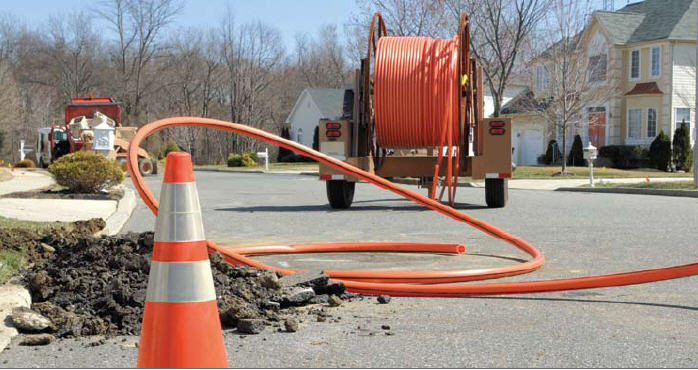Our fancy Internet infrastructure operates on a wire and a prayer

The fiber-optic outage---actually sabotage---in the Bay Area on Thursday reveals a dirty little secret: Our infrastructure is ridiculously vulnerable and it only takes a few vandals (or terrorists) to bring communication to its knees.
While it's unclear what exactly happened, AT&T is offering a $100,000 now $250,000 reward to find the vandals that cut into fiber optic wires and whacked everything from hosting centers---including a few of our own---911 calls and other communication (Techmeme). Sam said it best: No matter how advanced we get we're still hooked up to a big wire somewhere.
That's not going to change. The big question: How are we going to protect those big wires?

What's truly scary is that we're not just talking about the Internet here. The electric grid is vulnerable. Our transportation grid is vulnerable. Our infrastructure in the U.S. is a big sitting duck. The grid and the Internet are top of mind today, but I'm reminded of the overall infrastructure vulnerability every trip into Penn Station. Every once in a while you'll see heavily armed police with their K-9 dogs in Penn Station's lobby. It's a common sight. However, if you really wanted to bring down the train station and subway it's nothing a stray backpack couldn't take care of.
Simply put, it's impossible to completely secure all of the infrastructure out there. And everyone knows it. In 2003, a student dissertation raised national security concerns. It's not rocket science to map infrastructure and cook up scenarios.
So what can we do?
Surely, it makes no sense to put armed guards at every manhole cover, fiber optic hub, power line and transportation grid. However, there may be a few things we can do:
- Seal the manholes: It's relatively easy to pop one and clip a line or two.
- Smart sensors: Is there the equivalent of a car alarm for fiber optic lines?
- Better surveillance: Critical national infrastructure---like the places the AT&T fiber optic lines were cut---mostly resides in private hands. Is there a way to hook these areas up into a national security monitoring network?
- Improved fail-over processes. Sure, the Internet is set up to reroute traffic, but it's not perfect. Can we build in more resiliency?